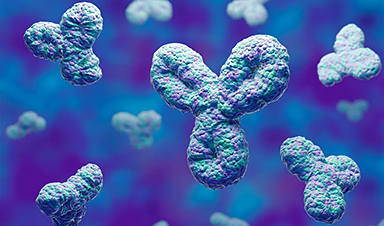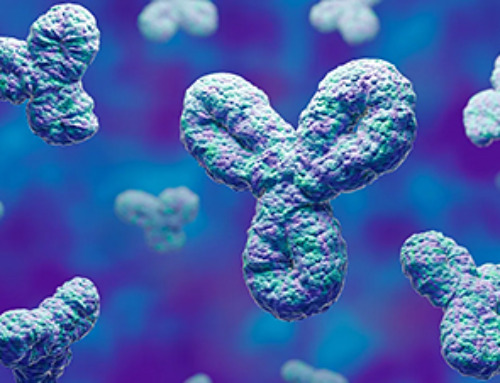Nanopore sensing has emerged as a versatile approach to detecting and identifying biomolecules. Within this frame of reference, the fast-responding ionic current is considered an essential criterion for accurately measuring small objects with a nanopore.
An article published in the journal IScience discussed the role of ion diffusion kinetics at the liquid-electrode interface in nanopore sensing. Here, a slow and large reduction in ionic current through a nanopore was observed using platinum (Pt) electrodes in a salt solution, suggesting the significant influence of impedance generated at the metal-liquid interface via Cottrell diffusion.
During the nanoparticle detection, the resistive pulses became weak, followed by a constant increase in the resistance at the partially polarizable electrodes. Moreover, the interfacial impedance coupled with the nanopore chip capacitance degraded the ionic current’s temporal resolution in a time-varying manner. The findings of the present work can help choose the ideal size and material of electrodes for analyzing single particles and molecules by the ionic current.
Nanopore Towards Analyte Detection
Nanopore helps analyze biological samples at a single molecule level. Nanopore sensing is developing into a powerful label-free approach to investigating the features of biomolecules at the single-molecule level.
Here, the translocation of species residing within a nanopore effectively changes the physical and chemical properties of the nanopore interior (conductance or refractive index), detected in a label-free manner.
When a charged molecule is captured within a nanopore, it modulates the ionic current, which is recorded in real-time to reveal the properties of the target molecule. Thus, the nanopore serves as a conductometer that detects a relative change in ion flow at the nanoscale level.
Electrochemistry in a confined space has attracted significant interest because of the intriguing effects of nanoconfinement on mass transport, electrochemical kinetics, and electric field. The nanopore electrochemistry provides a powerful method to address scientific challenges in nanoscience, biochemistry, and energy conversion and storage.
Nanopores providing the electrochemically confined space for the accommodation of single analytes directly convert the single-molecule behaviors into the measurable electrochemical read-outs with a high signal-to-noise ratio.
In the nanopore-based electrochemical reaction, the electric current reveals the dynamics at the electrode-liquid interfaces. Here, the application of voltage results in the over-consumption of reactants, disturbing the local ion distribution and subsequently inducing motions in the bulk that ultimately leads to the relaxation of the acute ion concentration gradient near the electrode surface. The ionic current gradually declines due to the Cottrell diffusion, and its features reveal information about the nature of ions.
Role of Electrodes in Nanopore Sensing
In the present study, the resistive pulse measurements of various polymer nanoparticles were compared using different kinds of electrodes to investigate the relevance of Cottrell diffusion in nanopore sensing. The findings in the present work proved the role of electrode materials in nanopore sensing.
Using a silver (Ag)/ silver chloride (AgCl) electrode system prevented fluctuations in ionic current flow in chloride solution, which otherwise were associated with variation in concentration of reactants and products due to their adsorption or precipitation at the surface of the electrode. The persistent ionic current consequently helped in detecting the particles and molecules.
On the other hand, replacing Ag/AgCl with Pt electrodes resulted in different ionic current characteristics. Here, the open pore current (Ipore) showed a large decrease compared to Ag/AgCl electrodes. Moreover, unlike Ag/AgCl electrodes, the electrochemical reactions in the chloride solution involved no precipitation or adsorption of the reactants, which induced a growing interfacial impedance.
While using Ag resulted in a reduced Ipore and the resistive pulse heights over time, using a titanium (Ti) electrode resolved the issue by maintaining a stable ionic current and uniform height resistive pulses of the polystyrene nanoparticles, demonstrating the superior usefulness of Ti compared to Ag/AgCl for nanopore sensing.
Conclusion and Limitation of the Study
Overall, the results of this study demonstrated the significance of electrode materials in nanopore sensing. It has been demonstrated that Ag/AgCl is especially helpful for obtaining persistent ionic current in a chloride solution for reliable resistive pulse detections of particles and molecules.
Electrochemical reactions at the Pt surfaces, in contrast to those at non-polarizable electrodes, did not result in the precipitation or adsorption of reactants, resulting in an increased interfacial impedance.
It has been shown that this Cottrell diffusion-derived resistance significantly reduced the temporal resolution of ionic current measurements and altered the translocation dynamics of analytes in a time-varying manner, making it impossible to distinguish between analytes like viruses and proteins based on the differences in the ionic signal waveforms.
Although the present work demonstrated the roles of electrode materials, the study was restricted to only nanopores of 300-nanometer diameter. Moreover, since the smaller nanopores possess a larger resistor of resistance at the nanopore (Rpore), the role of Cottrell diffusion changes as the voltage division at the resistor of resistance at the electrode (Rele) becomes smaller.
News
Specially engineered antibody delivers RNA therapy to treatment-resistant tumors
Elias Quijano, PhD; Diana Martinez-Saucedo, PhD; Zaira Ianniello, PhD; and Natasha Pinto-Medici, PhD, there are 25 other contributors, most from Yale's Department of Therapeutic Radiology and from the departments of genetics, molecular biophysics and [...]
Vaccinated women face fewer cervical cancer risks
New data from Denmark shows the HPV vaccine’s powerful long-term impact, while also revealing why cervical cancer screening is still essential. A Danish study published in the journal Eurosurveillance reports that women who received the human [...]
3D-printed implant offers a potential new route to repair spinal cord injuries
A research team at RCSI University of Medicine and Health Sciences has developed a 3-D printed implant to deliver electrical stimulation to injured areas of the spinal cord, offering a potential new route to [...]
Nanocrystals Carrying Radioisotopes Offer New Hope for Cancer Treatment
The Science Scientists have developed tiny nanocrystal particles made up of isotopes of the elements lanthanum, vanadium, and oxygen for use in treating cancer. These crystals are smaller than many microbes and can carry isotopes of [...]
New Once-a-Week Shot Promises Life-Changing Relief for Parkinson’s Patients
A once-a-week shot from Australian scientists could spare people with Parkinson’s the grind of taking pills several times a day. The tiny, biodegradable gel sits under the skin and releases steady doses of two [...]
Weekly injectable drug offers hope for Parkinson’s patients
A new weekly injectable drug could transform the lives of more than eight million people living with Parkinson's disease, potentially replacing the need for multiple daily tablets. Scientists from the University of South Australia [...]
Most Plastic in the Ocean Is Invisible—And Deadly
Nanoplastics—particles smaller than a human hair—can pass through cell walls and enter the food web. New research suggest 27 million metric tons of nanoplastics are spread across just the top layer of the North [...]
Repurposed drugs could calm the immune system’s response to nanomedicine
An international study led by researchers at the University of Colorado Anschutz Medical Campus has identified a promising strategy to enhance the safety of nanomedicines, advanced therapies often used in cancer and vaccine treatments, [...]
Nano-Enhanced Hydrogel Strategies for Cartilage Repair
A recent article in Engineering describes the development of a protein-based nanocomposite hydrogel designed to deliver two therapeutic agents—dexamethasone (Dex) and kartogenin (KGN)—to support cartilage repair. The hydrogel is engineered to modulate immune responses and promote [...]
New Cancer Drug Blocks Tumors Without Debilitating Side Effects
A new drug targets RAS-PI3Kα pathways without harmful side effects. It was developed using high-performance computing and AI. A new cancer drug candidate, developed through a collaboration between Lawrence Livermore National Laboratory (LLNL), BridgeBio Oncology [...]
Scientists Are Pretty Close to Replicating the First Thing That Ever Lived
For 400 million years, a leading hypothesis claims, Earth was an “RNA World,” meaning that life must’ve first replicated from RNA before the arrival of proteins and DNA. Unfortunately, scientists have failed to find [...]
Why ‘Peniaphobia’ Is Exploding Among Young People (And Why We Should Be Concerned)
An insidious illness is taking hold among a growing proportion of young people. Little known to the general public, peniaphobia—the fear of becoming poor—is gaining ground among teens and young adults. Discover the causes [...]
Team finds flawed data in recent study relevant to coronavirus antiviral development
The COVID pandemic illustrated how urgently we need antiviral medications capable of treating coronavirus infections. To aid this effort, researchers quickly homed in on part of SARS-CoV-2's molecular structure known as the NiRAN domain—an [...]
Drug-Coated Neural Implants Reduce Immune Rejection
Summary: A new study shows that coating neural prosthetic implants with the anti-inflammatory drug dexamethasone helps reduce the body’s immune response and scar tissue formation. This strategy enhances the long-term performance and stability of electrodes [...]
Scientists discover cancer-fighting bacteria that ‘soak up’ forever chemicals in the body
A family of healthy bacteria may help 'soak up' toxic forever chemicals in the body, warding off their cancerous effects. Forever chemicals, also known as PFAS (per- and polyfluoroalkyl substances), are toxic chemicals that [...]
Johns Hopkins Researchers Uncover a New Way To Kill Cancer Cells
A new study reveals that blocking ribosomal RNA production rewires cancer cell behavior and could help treat genetically unstable tumors. Researchers at the Johns Hopkins Kimmel Cancer Center and the Department of Radiation Oncology and Molecular [...]





















